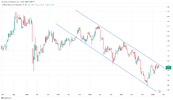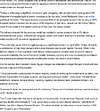JohnDe
La dolce vita
- Joined
- 11 March 2020
- Posts
- 4,300
- Reactions
- 6,360
Spoke to a financial advisor this morning, very interesting conversation with some leads. One thing she mentioned is that reserve banks around the world have slowed inflation, but it is still 'sticky' and will be for a while. The EU and UK are in recession, the USA economy is going gangbusters. Australian Retail sales figures are up but units are down, take what you want from that.
Inflation war ‘isn’t yet won’: RBA; ASX up
Bullock says 'the war isn't yet won' on inflation, RBA 'not ruling anything in or out'.RBA keeps rates on hold at 4.35pc amid inflation watch
The Reserve Bank board has held interest rates steady for a third consecutive meeting but offered scant encouragement to struggling mortgage holders they will receive imminent relief , saying only that it “is not ruling anything in or out”.
The decision was widely expected by economists and investors, and leaves the cash rate at a 12-year high of 4.35 per cent.
The RBA board, in a statement accompanying Tuesday’s decision, said “while recent data indicate that inflation is easing, it remains high”, and that it will be “some time yet” before it is sustainably back within the 2-3 per cent target range.
“The path of interest rates that will best ensure that inflation returns to target in a reasonable time frame remains uncertain, and the board is not ruling anything in or out,” the statement said.
RBA watchers may detect some softening in the RBA’s language, however, after the latest guidance replaced the previous month’s key phrase that “a further increase in interest rates cannot be ruled out”.
There are firm hopes that easing price pressures will give the RBA room to begin offering mortgage holders some relief in August or September via a first rate cut.
The board in its statement, however, reiterated that it remained on watch-and-wait mode, and that it “will rely upon the data and the evolving assessment of risks”.
The 13 rate hikes since May 2022 have added a notional $1815 to the monthly repayments for a homeowner with a $750,000 mortgage, and $1210 to the monthly repayments on a $500,000 loan.
The RBA board’s latest decision comes after national accounts figures showed economic growth slowed to a near standstill at the end of last year, as cost of living pressures and soaring borrowing costs crushed consumption.
Inflation, on a monthly basis, has slowed to 3.4 per cent in the year to January, although economists have warned that the “stickier” services prices were not well represented in the latest data release.
Jobs figures on Thursday loom as the next major data release, with analysts anticipating that the end of summer seasonal factors will drive a rebound in employment and push unemployment back down to 4 per cent, from 4.1 per cent.
Any disappointment in the labour force figures would add to the probability of a rate cut in the coming six months.
The two-day board meeting was the first attended by recently installed deputy chairman, Andrew Hauser, and will be followed by a press conference with governor Michele Bullock at 3:30pm, Sydney time.





